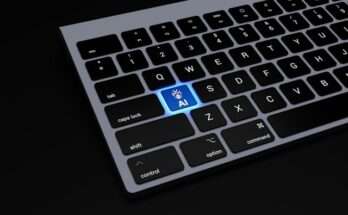Experience Prototyping, Prototyping has always been an integral part of the design process, especially when it comes to usability and experience design, but it can also be used in many other scenarios as well. In this article, we’ll give you an overview of how to experience prototyping can help you make better products, both from a project and from an overall organizational standpoint. By the end of this article, you’ll know how to incorporate prototyping into your workflow and processes and make better products that are more focused on the end-user and their experiences with your product or service. Let’s get started!
How Experience Prototyping Can Help You Make Better Products
- What is an experience prototype?
- An actual example of an experience prototype
- The benefits of creating one
- How you can create your own

What is an experience prototype?
An experience prototype is a type of prototype that focuses on the user experience of a product or service. It’s used to test out ideas and help improve the overall design. Unlike other types of prototypes, experience prototypes are not meant to be functional; instead, they’re meant to help you understand how users will interact with your product or service. They can also be used to communicate ideas in a very short amount of time. There are three main ways to create an experience prototype: paper prototyping, low-fidelity prototyping, and high-fidelity prototyping.
Paper prototyping involves creating the entire interactive design on paper before moving it into another medium like HTML or CSS. Low-fidelity prototyping typically starts off as sketches or wireframes before being fleshed out more fully with graphics and animations. High-fidelity prototyping is similar to low-fidelity prototyping but often goes even further by adding things like clickable buttons.
These three methods all have their own advantages and disadvantages, but the method you choose will depend on what you want to accomplish with your prototype. If you just want to see what something looks like without going through the trouble of designing it from scratch, then paper prototyping might be best for you. If you want to know if people will use something even though they might not necessarily find it useful, then high-fidelity may work better for that purpose.
A prototype is a preliminary model of something. Projects that offer physical products need to show backers documentation of a working prototype. This gallery features photos, videos, and other visual documentation that will give backers a sense of what’s been accomplished so far and what’s left to do. Though the development process can vary for each project, these are the stages we typically see: Proof of Concept Explorations that test ideas and functionality. Working Prototype Demonstrates how all parts come together in a single functioning unit. Visual Prototype Exhibits the external appearance of an unfinished product under development. Product Video Shows consumers what they are backing while explaining exactly what it is they are funding.
An actual example of an experience prototype
An experience prototype is a tool that can help you make better products. By creating a prototype of your product, you can test it out with users and get feedback. This feedback can help you improve the product before it goes to market. Plus, experience prototyping can help you save time and money by catching problems early on. Imagine if you had built an entire app or website without any prototypes. There would be no way for you to know what’s working or not until the final product is released.
That could mean spending lots of time and resources on something that nobody wants! Thankfully, there are many tools available to designers who want to use experience prototyping. One of these tools is SketchApp; it has tools like templates and free downloadable icons which allow designers to create high-quality designs quickly. It also provides real-time collaboration so everyone in the design process can work together easily and efficiently. Check out this video about how one designer used SketchApp during her design process
Another tool that designers use is Marvel. It allows designers to quickly turn their designs into prototypes. This way, they can test out their ideas in real life before they go to market. Marvel also has templates available and helpful tutorials on how to build experience prototypes. This ensures that you get a quality product that’s easy for people to use!
The benefits of creating one
- Helps you explore the user experience early on in the design process
- Gives you a way to test out ideas quickly and cheaply
- Encourages you to think about all aspects of the user experience, not just the visual design
- Allows you to get feedback from users early and often
- Helps you identify potential problems with your product before it goes to market
- Makes it easier to make changes to your product before it’s too late
- Can save you time and money in the long run by helping you avoid costly mistakes that could take days or weeks to fix
- Increases the likelihood that people will be satisfied with your product when they do finally use it
- Creates a strong bond between designers and developers by giving them more information upfront
- Reduces rework later on
- Leads to better products for everyone
The point of creating an experience prototype is to gather and document feedback on your product. Since you’ll be testing it with real users, there’s always a chance that they may find bugs or make suggestions for improvements that you hadn’t thought of before. Also, since prototypes are usually created early in development, they can help you prevent having to do costly rework later on if a feature doesn’t work out as planned. And lastly, if your product succeeds and becomes popular with users, having a prototype ready will make it easier for your company to continue supporting and enhancing it over time.
How you can create your own
If you’re looking to create a new product, experience prototyping can be a helpful tool. By creating a prototype of your product, you can test it out with potential users and get feedback. This can help you make improvements before launching your product. Plus, it can help you assess whether there is even a market for your product. Here’s how to get started with experience prototyping:
- Define the problem you’re trying to solve.
- Identify your target users.
- Create a rough sketch or wireframe of your idea.
- Build a prototype using materials that are readily available.
- Test your prototype with potential users and collect feedback.
- Evaluate their responses and decide on the next steps based on what they say.
- Share the results of your tests so other people can learn from them too!
Don’t feel like you need to start with a new product. Often, it’s more effective to experience a prototype of something that already exists. If you have an idea for an app or website, user experience prototyping techniques to test out its features and UX before spending time developing it. Then if there is enough interest in your idea, develop it into a full-blown product!
Giving away content in exchange for email addresses is one of the oldest internet marketing tactics around. Email lists are a valuable resource since they help market directly to potential customers. More importantly, they give users easy access to help and support when they need it most.




